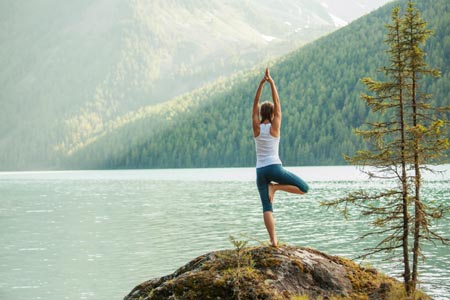Scoliosis is a spinal aberration that has been around for centuries. Even prehistoric cave paintings show men being treated with braces to support issue with the spine. Scoliosis causes deformity in the spine which of course is connected to so much more. Ribs become displaced and the shoulders and hips shift so the body’s center of gravity is way off. While most will worry primarily about how they appear when they have scoliosis, it’s also painful and causes issues with the heart and lungs.

Scoliosis causes the spine to be S curved from side to side down the back. It can also be a reversed S curve which comes with its own set of problems. The spine will rotate toward whatever side of the S curve is concave. This causes a twisting of the rib cage which makes one side of the back overcompensate because it’s uneven. If the curvature is in the middle of the back, the ribs compress on the concave side and cause the convex side to spread apart. The ribs can protrude which can cause a painful mass of muscle tissue.
What Studies Say About Side Plank and How it Can Help with Scoliosis
A new study lead by Dr. Loren Fishman at the Columbia University College of Physician and Surgeons in New York found yoga could be helpful in helping with scoliosis. They found that performing just one yoga post for at least 90 seconds for a minimum of 3 times weekly could reduce spine curvature within 3 months. The pose they used was side plank and asked patients to do this on the weaker side of the spine.
Side plank was chosen because it strengthens the spinal muscles on the convex side. This helps to then reduce curve reduction. The study found that this particular pose improved spine curvature in 32% of the patients. The average improvement of spine curvature was 40%.
Poses for Scoliosis
The National Scoliosis Foundation has a recommendation of 25 yoga poses they support for helping those with spine curvature. Here are some of them. Note that it’s important to start slowly with any of these poses and of course check with your doctor before you begin.
Mountain Pose
While it’s a simple pose, it can help you balance and improve core strength. It’s also good because it’s a beginner pose with very little ability to injure yourself.
In this standing pose, you want your big toes to touch with heels a little bit separated. Focus on relaxing your shoulders so your arms hang by your side.
Yoga instructors will often ask you to envision your feet rooted down into the earth as though you’re a tree. Closing your eyes in this pose helps you to visualize more easily.
Try to spread out your toes so your feet really root the body. This will help you balance.
Engage your thigh muscles.
Side Plank
The side plank showed to be helpful for spine curvature correction in the study mentioned above. This pose is challenging and it will take time to develop the strength. By staying up for a minimal amount of time but repeating a few times a day, you slowly develop strength without injury.
Lie down on your weak side with straight legs.
Using your elbow and forearm, prop up your upper body.
When you first begin this pose, start by trying to stay up for 20 seconds. As you get stronger, extend the time you stay up.
Cat/Cow Pose
This pose has many benefits but it’s best known for spinal health. It opens up the spaces between the vertebrae. Cat/Cow pose also stretches the tendons and muscles in both directions that support the spine.
You want to start in table top pose which is where you have your hands and knees on the ground. You want your hands below your shoulders and your knees below your hips.
Focus on getting your abdominal muscles engaged.
When you inhale, you’ll lift your head and tailbone simultaneously. This makes the lower back concave.
When you exhale, you’ll release your neck and drop your head. By tucking the tailbone and lowering the head, you’ll cause your back to round.
Repeat this a few times daily. Work with the breath and let it guide the movement.
Child’s Pose
Start by sitting on your heels.
Stretch out your hands and let them touch the mat.
Bring your upper body forward and lower your chest down.
Stretch your arms forward and breathe deeply into your back.
This will leave you feeling deeply relaxed and it lengthens the back and spine muscles. It’s said that if you stay in this position for 11 minutes, it’s the equivalent of 4 hours sleep.
Scoliosis is defined as structural or function. When it’s structural, there are serious developments that can occur. It can cause unequal growth on either side of the vertebrae. It will usually begin during adolescence. With functional scoliosis, it affects back muscles and doesn’t alter the body structurally.
The main reasons someone will develop functional scoliosis is due to bad posture, doing unbalanced activities daily. This might include a heavy bag that is always carried to the side as opposed to the weight being equally carried by the back. Functional scoliosis is more common than structural scoliosis but the good news is that is reversible. Yoga has been found to be a very effective tool to help reverse this process.



